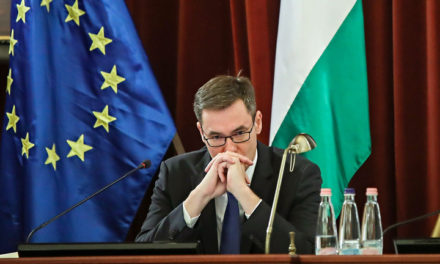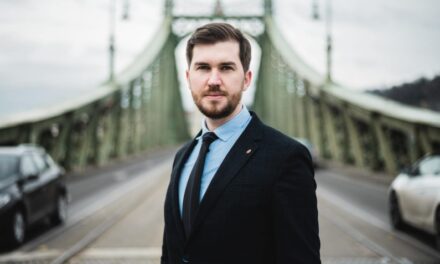Viktor Orbán started the Hungarian presidency of the union in an unusual way, embarking on a five-stop peace mission, during which he asked three important questions about the war in Ukraine to the leaders of the five powers that most determine the outcome of the conflict.
Viktor Orbán summarized the results of his peace mission in ten points, which he sent in the form of a letter to the President of the European Council, Charles Michel. In our new series, we explore these ten points. The first point describes the nature of the military conflict, the intensity of which will increase according to the general observation made by the Hungarian Prime Minister. That is why it is important to start the peace negotiations as soon as possible!
Viktor Orbán started the Hungarian presidency of the union in an unusual way, embarking on a five-stop peace mission, during which he asked three important questions about the war in Ukraine to the leaders of the five powers that most determine the outcome of the conflict. He summarized his experiences in ten points, which everyone can now read.
Before starting to explain the first point, it is important to ask the question why the other two prime ministers of the Spanish-Belgian-Hungarian trio did not take the trouble and give peace at least as much chance as their Hungarian counterparts? Angela Merkel at least tried the Minsk process, although she admitted in a later interview that the purpose of the negotiations for the West was mostly to buy time for Ukraine to gather strength to recapture the two eastern Ukrainian regions (Donbass and Luhansk).
The first of the ten points in the Hungarian Prime Minister's letter draws attention to the general observation that
"the intensity of the military conflict will escalate radically in the near future",
which justifies the peace mission. As long as the parties on the battlefield try to turn towards the other, there is little chance for negotiations and peace. The fortunes of war literally change, and this was also the case in the Ukrainian-Russian war: After the Russian army was unable to take Kiev by surprise at the end of February 2022, as the Soviets did the Afghan capital, Kabul, at Christmas 1979, the Russian attack, which was initially insufficient in terms of personnel and equipment, stalled. . The approx. 180,000 Russian soldiers occupied twenty percent of the territory of Ukraine in the first stage of the attack, but they could hardly hold the 1,300-kilometer front and the occupied territory.
The West's support has ranged from the five thousand protective helmets initially offered by the Germans, Turkish drones, Czech and Polish T-72 tanks to American precision missiles by the fall of 2022. In September 2022, the Ukrainians launched their first counterattack in the Kharkiv area, during which they sent fast units behind the Russian lines, which took photos at every place name sign and easily identifiable point (city hall, police station, monument) and immediately uploaded them to the social media sites used by the Russians.
Because many Russian commanders believed that the Ukrainians were already behind them, Russian troops often fled, leaving squads and priests behind. In the fall of 2022, the Ukrainians launched another counterattack: With the American HIMARS missiles, they weakened the regional capital, Kherson, on the west bank of the Dnieper, and the bridges connecting them with the Russian-occupied east bank, so that supplies could no longer be transported over them, but those with heavy weapons they also became incapable of retreating. The Russian commander (General Sergei Surovikin) called a retreat with the permission of the Kremlin and withdrew his soldiers in three days (by ferries and ships).
This was the last great Ukrainian success.
Encouraged by the success, Kiev announced a "big spring" counterattack by 2023, knowing full well that the attacking party must be at least three times outnumbered and even six times outnumbered against fortified positions. 2023 was the year when the major Western countries already sent armored personnel carriers to Ukraine, although not as much as the Ukrainians requested and as much as would have been necessary for the success of the "big spring" counterattack. Moreover, the Ukrainian counterattack started without significant air support, so the American Bradley and German Leopard armored vehicles intended as "Game Changers" quickly became prey for the Russian KA-52 (Alligator) combat helicopters. The Ukrainian counterattack was hampered by at least two factors: Ukrainian President Zelensky, who wanted to retake the city of Bakhmut occupied by the Russians (the Wagner group) at all costs, and directed part of the attacking force there. Another reason for the stalling of the counterattack was the Surovikin line built between November 2022 and the start of the counterattack, on which the Ukrainian tanks quickly got stuck.
With the counterattack, Ukraine burned its fourth army trained and equipped by the West.
Seeing the stalling of the Ukrainian counterattack, the American and British chiefs of staff already at the end of August 2023 "advised" the Ukrainians not to attack, but to defend themselves, because in this way they would be able to allocate their small forces better and the Russians would have to send more soldiers and weapons to attack, which it is easier for the defending party to destroy.
However, Zelenskiy, who is playing the "main role of his life", wants to constantly attack, and this is how we arrived at October 2023, when the Russians are approx. The Ukrainian fortress town of Avdiivka, 30 kilometers away, was attacked. They managed to take the city, which had been besieged for ten years, in February 2024 with a military ambush, they simply got behind the backs of the Ukrainians through a disused tunnel.
Just as after the capture of Bakhmut in May 2023, so also after the fall of Avdiivka, Kiev sent saboteurs (such as the "Legion of Free Russia") to the border regions of pre-war Russia, whose soldiers also took a spectacular photo at every place name sign. These pinprick-like actions mostly brought communication success, they did not significantly change the situation at the front.
By the year 2024, both parties will be exhausted. Ukraine and its Western supporters have run out of weapons left over from Soviet times and equipment that can be immediately transferred from the stocks of Western armies, so they typically send the finished war material to Ukraine from the production line. The resources of Russia, which has been preparing for war for years, are not endless, they are better off than the Ukrainians and their "hindland" is also larger, but they have not been able to achieve another meaningful breakthrough on the 1,300-kilometer front. Both sides are using the stalemate that will occur by the summer of 2024 to gather strength.
The EU and NATO want to make support for Ukraine "Trump-proof" and have "named" the war for five more years. The EU has already voted 50 + 20 billion euros, NATO voted 40 billion for one year instead of the 200 billion euros proposed by Jens Stoltenberg for five years, which is proportionally correct.
As long as the warring parties at the front want to get into a better negotiating position, they will work in Brussels and Moscow on where they can mobilize more money, weapons, ammunition and soldiers. As long as this is the focus, the killing and destruction will not stop. The first point of Viktor Orbán's peace mission draws attention to the fact that instead of further escalation, as an equal option, a cease-fire and peace negotiations should be put on the table!
Featured image: Zoltán Kiszelly, director of the Századvég Political Analysis Center, at the presentation of the Hungarian-German barometer produced by the Nézőpont Institute for the sixth time this year at the headquarters of the Civil Hungary Foundation in Budapest on October 5, 2022. MTI/Attila Kovács













